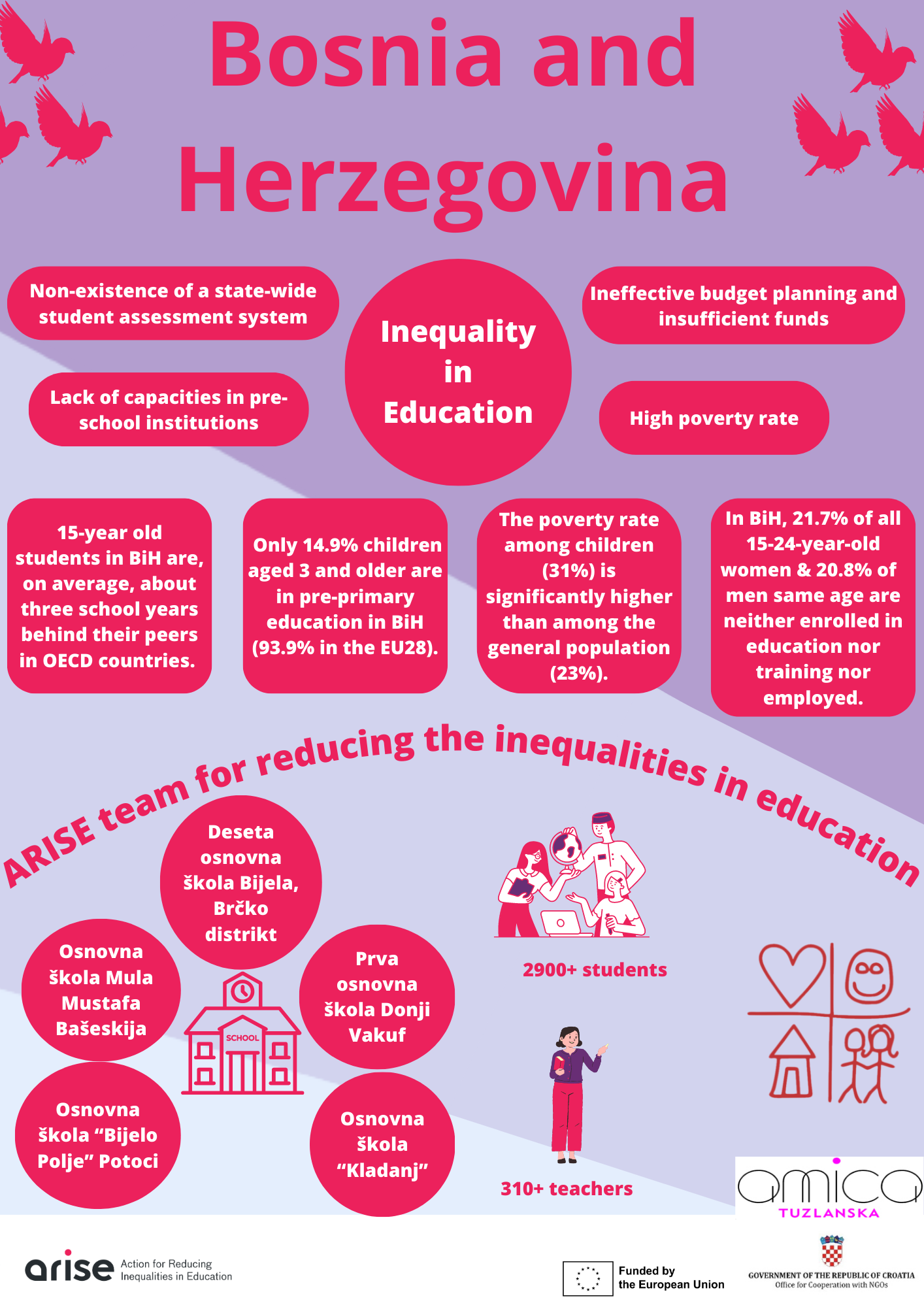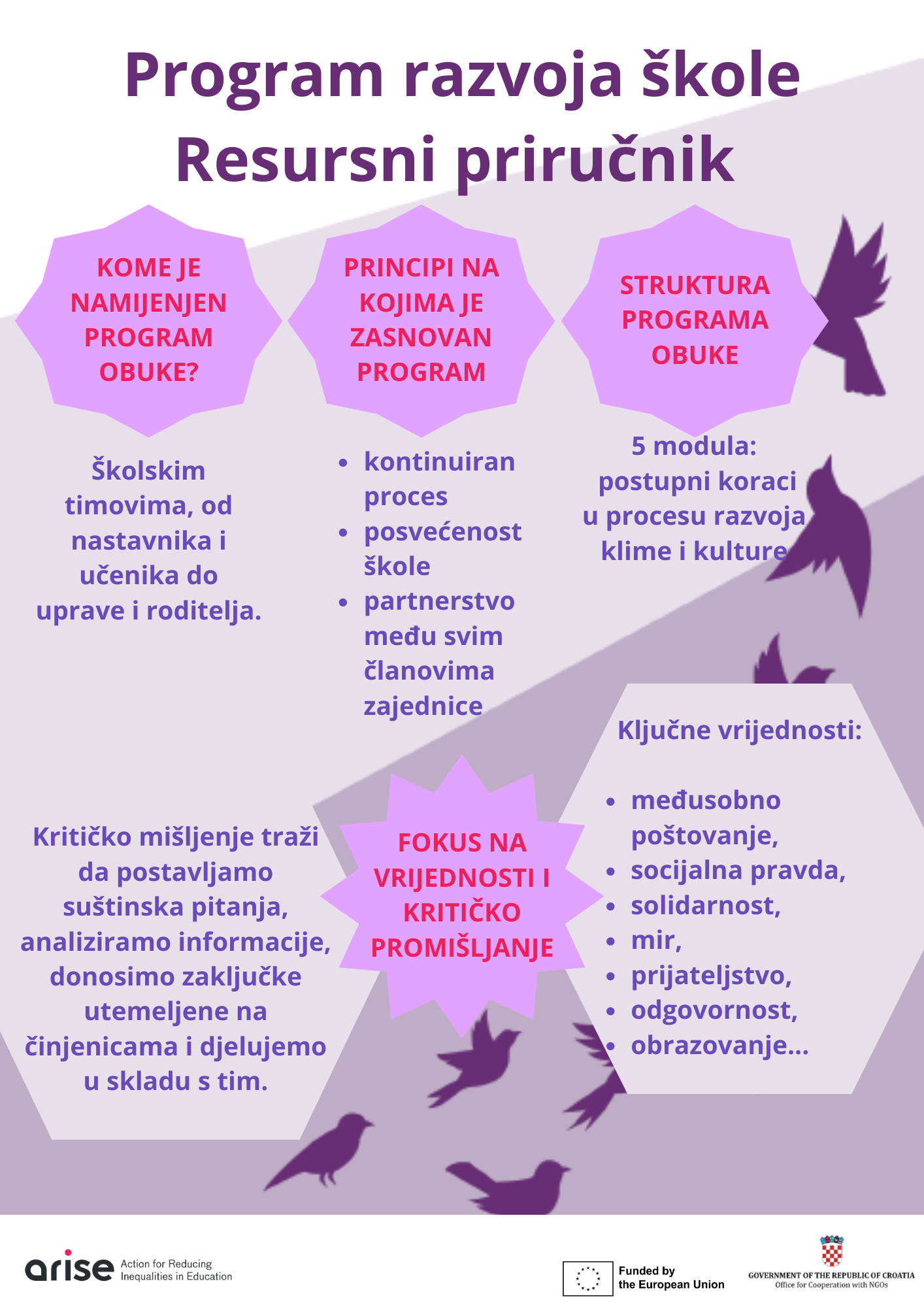Learn more about the main problems identified in connection to the gap between policy and practice in education in Bosnia and Herzegovina and what can be done to address this issue.
Inequalities in education in Bosnia and Herzegovina are reflected in several available data resources. For example, 23% of the population is on the edge of poverty, while more than half of the population is at risk of poverty1. Moreover, the poverty rate among children (31%)2 is significantly higher than among the general population (23%).
Furthermore, the inequalities are manifested on all educational levels:
- it is estimated that the gross enrolment ratio of children aged 3 and older in pre-primary education in BiH is only 14.9%, as opposed to 93.9% in the EU28 (Çağatay, 2017, p.2),
- PISA 2018 report showed that 15- year old students in BiH are, on average, about three school years behind their peers in OECD countries,
- 21.7% of all 15-24-year-old women are neither enrolled in education nor training nor employed, whereas 20.8% of all 15-24-year old men are out of education, training, or employment3.
The national report for Bosnia and Herzegovina developed within the ARISE project identified several main problems related to the cause of inequalities in education:
- High poverty rate: Among students in BiH, most variations in achievement are explained by the socio-economic status of students. Within any school, poorer students tend to show lower achievement and complete their schooling sooner than richer students.
- Lack of capacities in pre-school institutions: Agency for Statistics of BiH suggests 2,816 children could not be enrolled because of a lack of capacity, therefore due to an insufficient number of institutions.
- Ineffective budget planning and insufficient funds: The budget for equity measures is not included in the general budget for education and ministries often do not have relevant and up-to-date information necessary for effective budget planning.
- Non-existence of a state-wide student assessment system. There are no mechanisms in place to systematically measure or monitor the quality of education inputs, outputs, or outcomes, and data do not feed back into the policy-making process.
For an easier understanding of the complexity of this issue, the policy brief was developed, including a practical overview of the main issues, but also providing promising policy examples and recommendations for further development and improvement.
On the other hand, within ARISE project, we always emphasise the importance and significant impact of schools and teachers on the educational process, acknowledging the significant positive effect of education on all aspects of child development and well-being.
Center for Educational Initiatives Step by Step, ARISE project partner in Bosnia and Herzegovina, a professional, non-governmental organization established with the aim of promoting democratic changes in the education system in BH and equal access to high quality education for every child is implementing ARISE School Development Program in five schools:
- Deseta osnovna škola Bijela, Brčko distrikt
- Osnovna škola “Bijelo Polje” Potoci
- Osnovna škola “Kladanj”
- Osnovna škola Mula Mustafa Bašeskija
- Prva osnovna škola Donji Vakuf.
Overall, more than 2 900 students and 310 teachers in Bosnia and Herzegovina are direct or indirect beneficiaries of the step-by-step program focused on school climate and culture development with the main aim to create a safe environment where every child feels accepted and develops the competences, he or she needs, for living and creating a society based on universal human values, mutual respect and support.
School Development Resource Manual is available in English, Albanian, Bosnian, Macedonian and Serbian language.
1 Papić, Ž., Fetagić,M (2019), Towards the European Union-Key Social Inclusion Issues in B&H
2 Multiple Indicator Cluster survey (MICS 2011–12) data; Extended Household Budget survey, 2011; Initiative for Better and Humane Inclusion, Report on Poverty in Bosnia and Herzegovina, IBHI, 2013; World Bank data; UNICEF Bosnia and Herzegovina, Report on the Situation of Roma Children and Families in Bosnia and Herzegovina, 2013
3 International Labour Organization, ILOSTAT database. https://data.worldbank.org/indicator/SL.UEM.NEET.MA.ZS?locations=BA&most_recent_year_desc=true


